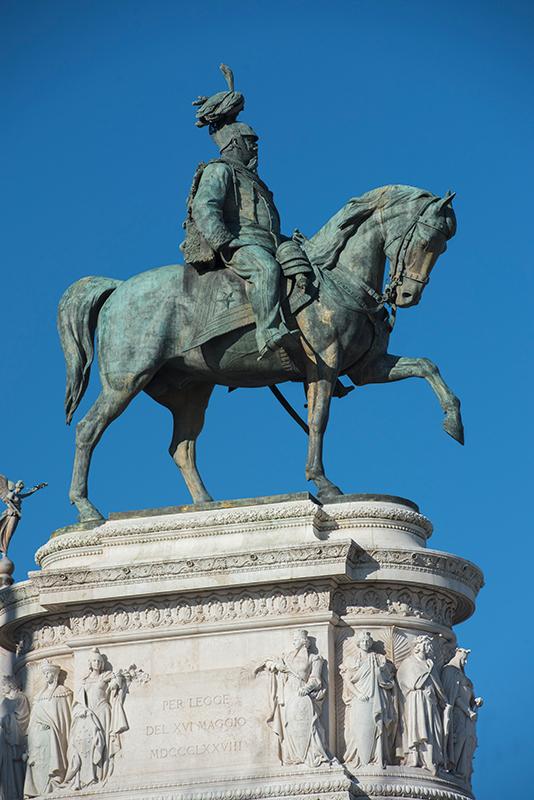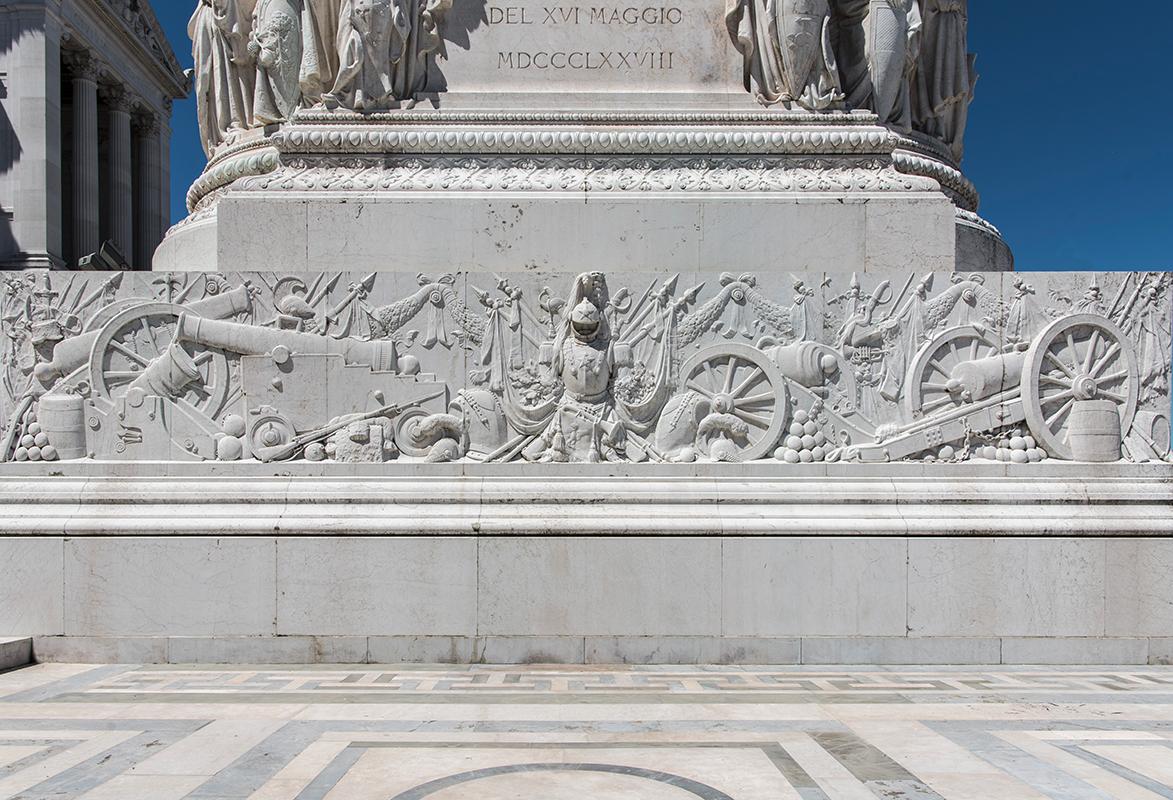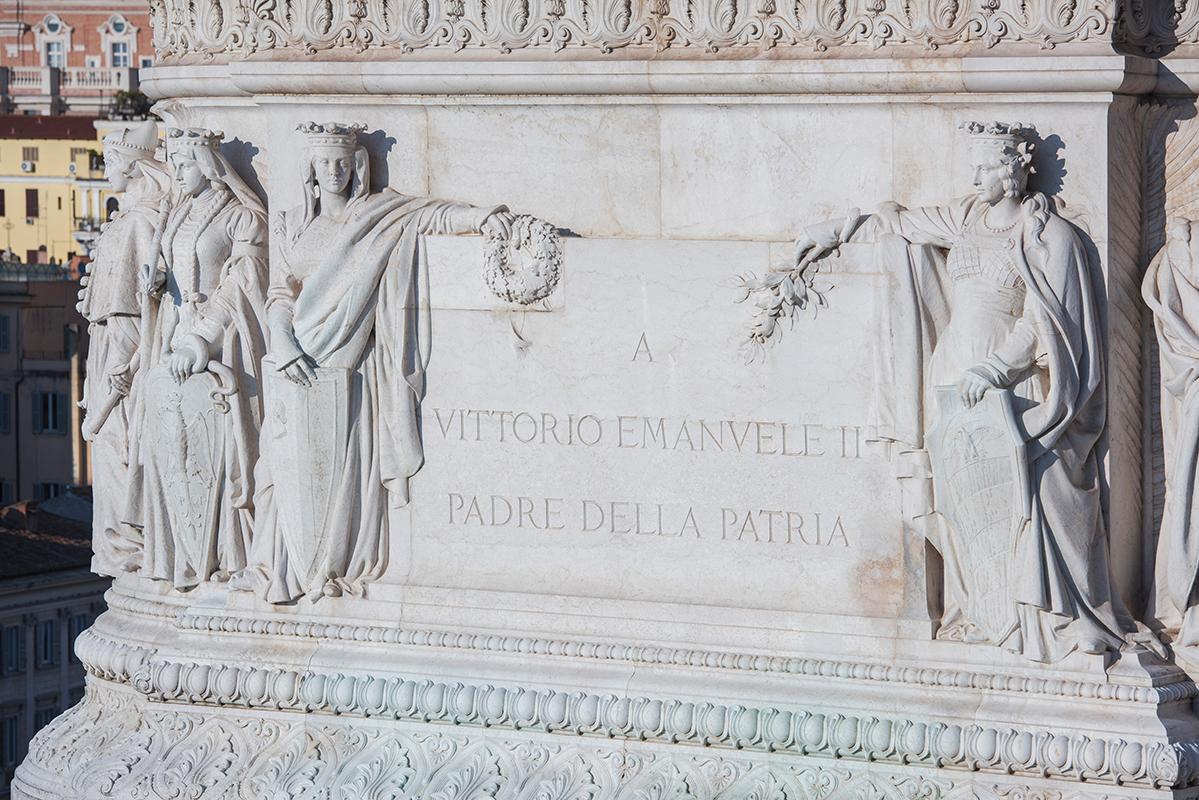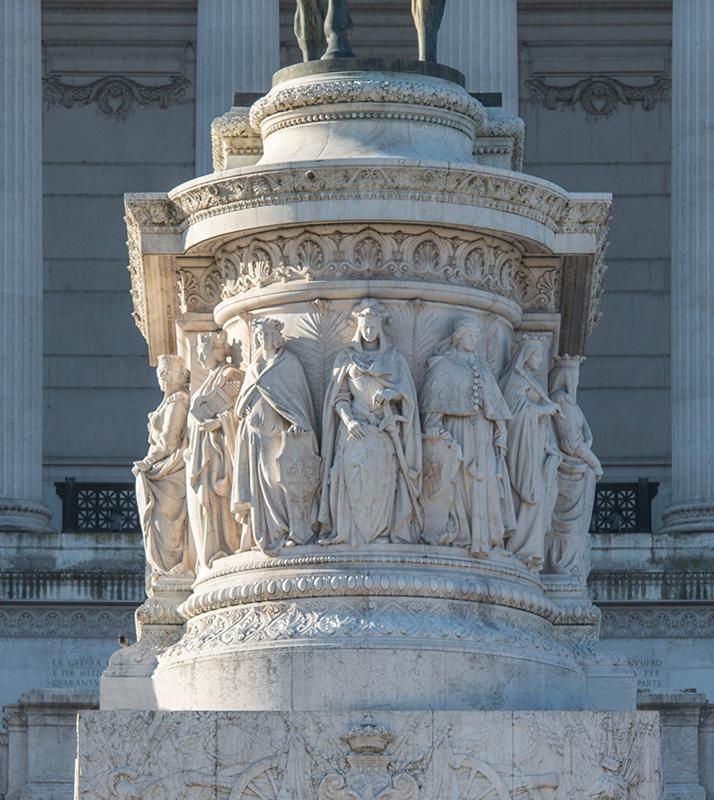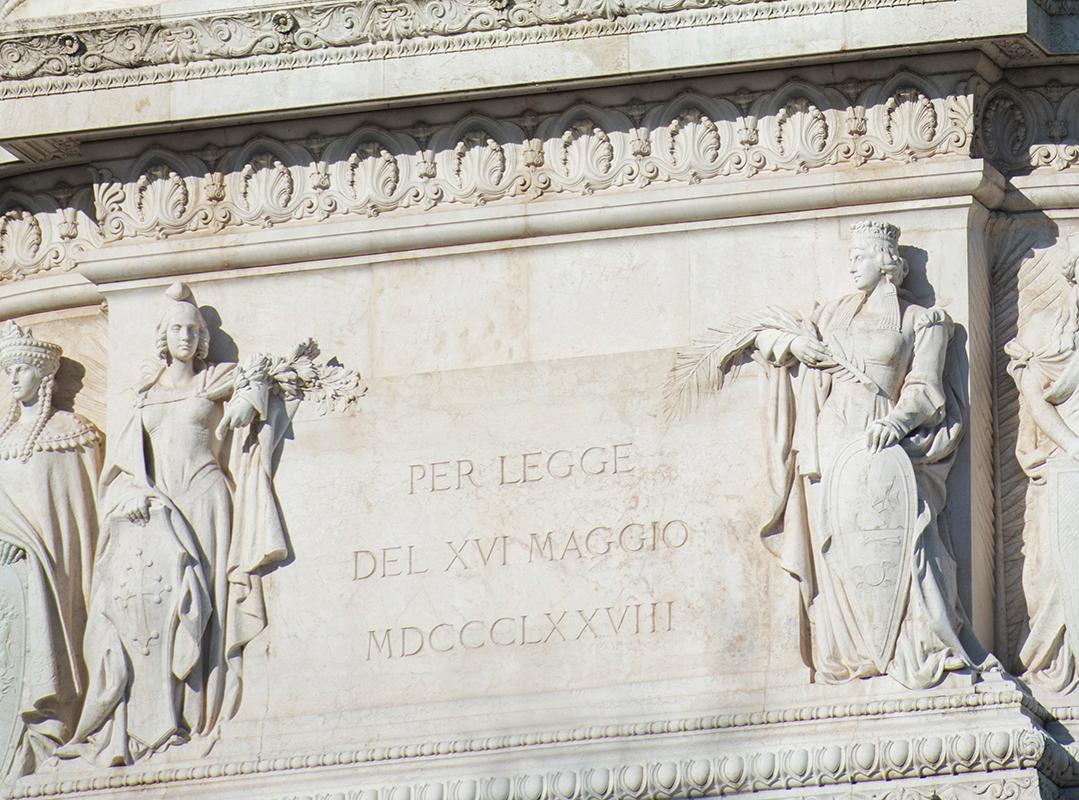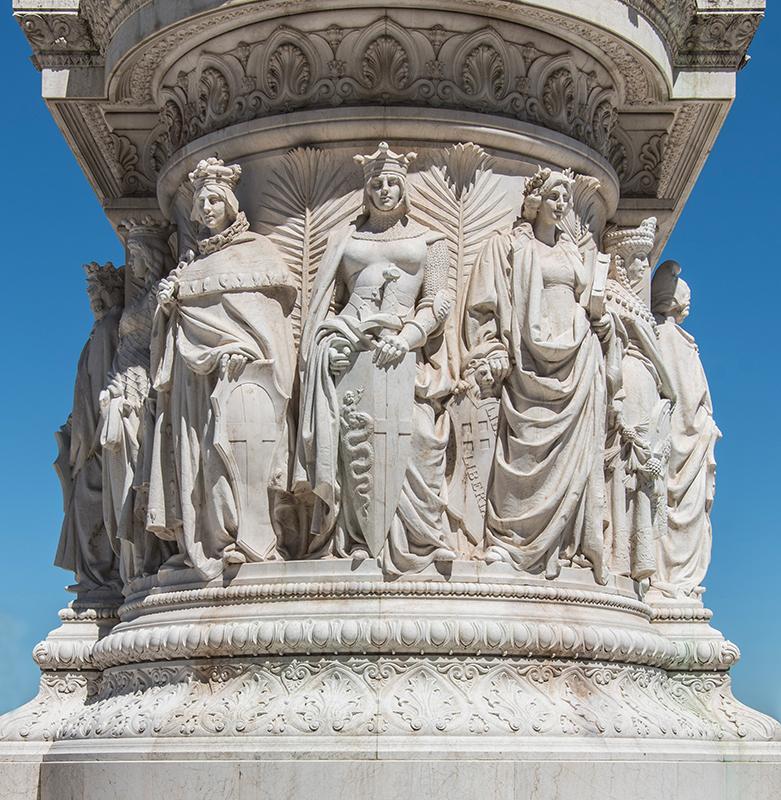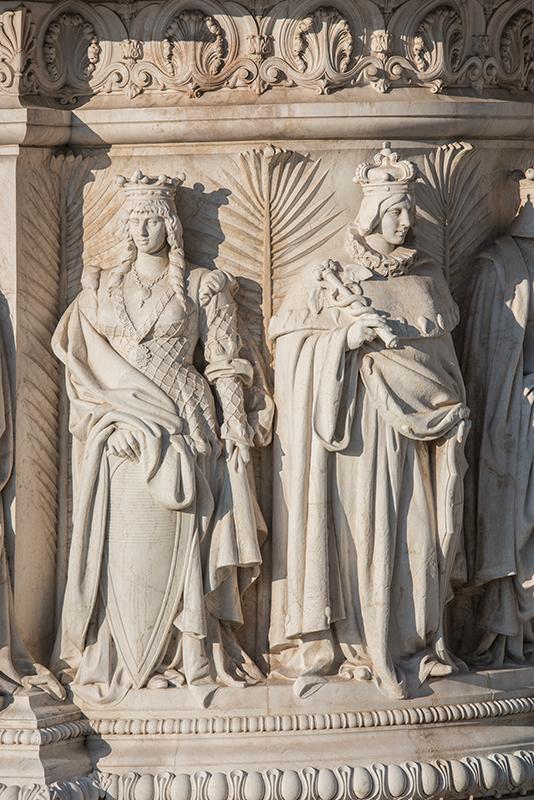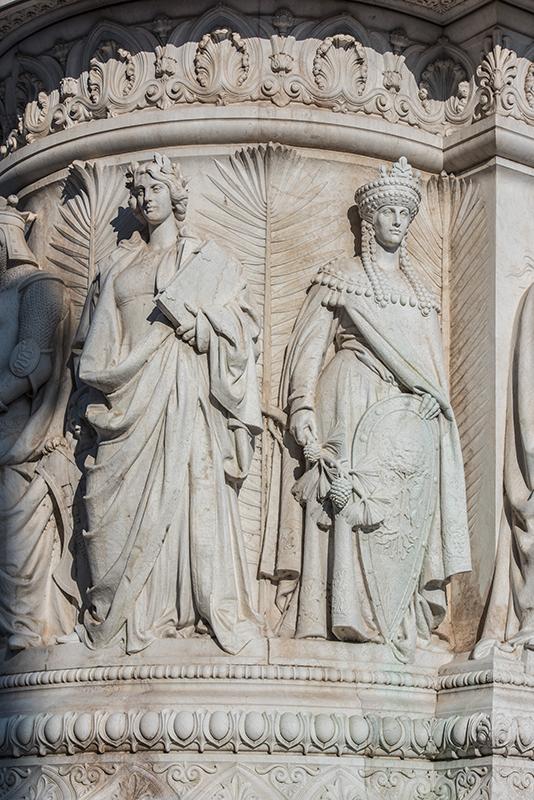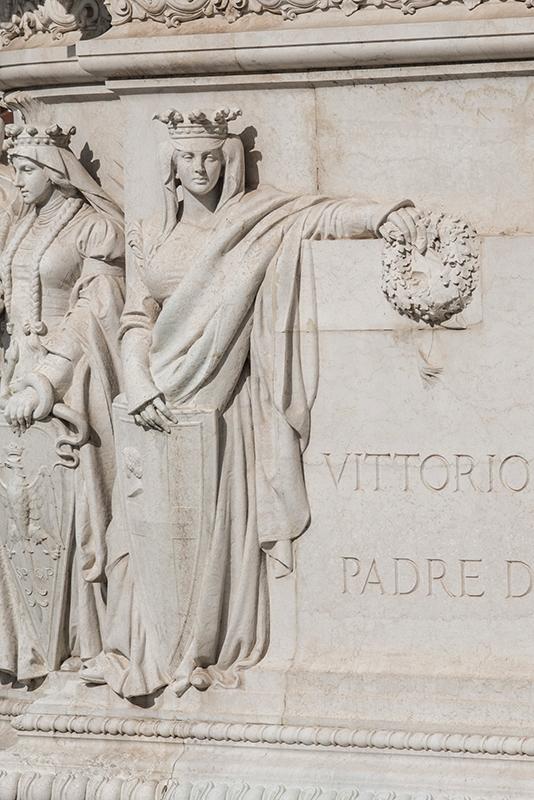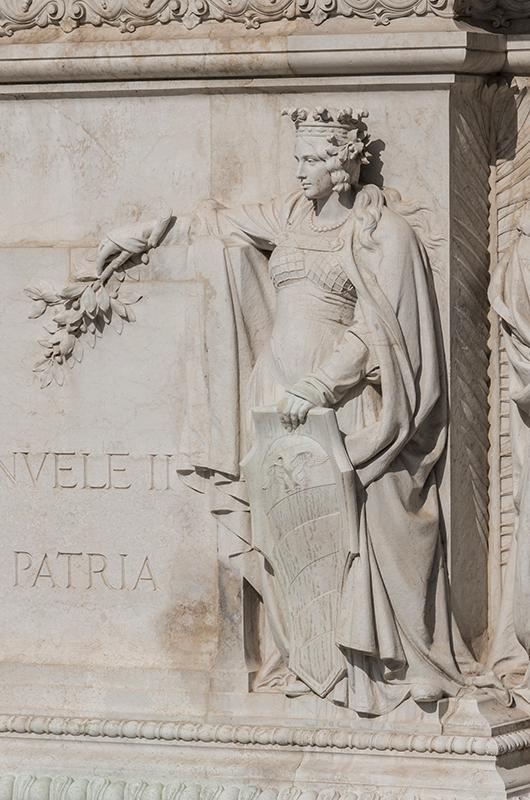The base of the statue of Victor Emmanuel II on horseback
The personifications of the fourteen most important cities in the history of the Italian peninsula are brought to life by the chisel of one of the most refined sculptors of the time, the favourite artist of the architect of the Vittoriano, Giuseppe Sacconi.
The base of the statue of Victor Emmanuel II on horseback was made by the artist from Lecce, Eugenio Maccagnani (1852-1930). The sculptor won the competition in 1908 and delivered the piece in 1910, in plenty of time for the inauguration of the monument, on 4 June, 1911.
Maccagnani was one of the favourite sculptors of the designer of the Vittoriano, Giuseppe Sacconi: Sacconi personally requested he join the building works and commissioned him to create many of the sculptural decorations. Although Sacconi died in 1905, Maccagnani remained involved in the building works and won the competition for the plinth with a design that was faithful to the artistic vision of the architect.
The base is organised on two tiers. The lower tier is decorated with the symbols of the victorious armed forces in the wars from 1848 to 1870, namely the Engineer corps, the department responsible for maintaining infrastructure and support works in combat: the Navy, the Artillery corps and the Cavalry. Here, Maccagnani returned to the classical reliefs of Trajan’s Column, which is only a few dozen meters away.
The upper tier has two inscriptions on the long sides: to the west “TO VICTOR EMMANUEL FATHER OF THE FATHERLAND”; to the east: “BY THE LAW OF 16 MAY 1878”. The former indicates who the Vittoriano is dedicated to, the latter refers to the law that sanctioned the construction of the monument.
The personifications of the fourteen Italian cities which have played the most significant role in the history of the Italian peninsula unfold around the inscriptions: they are represented as female figures identified by attributes that refer to their history.
On the south side, the one visible from Piazza Venezia, there is Turin, between Florence and Naples on the left, Venice and Palermo on the right. Dressed in medieval armour, Turin has a shield with the Bull, its emblem, and the Savoy motto, "FERT". Turin has this privileged position for two reasons: firstly, it was the capital of the state of the Savoy, that is of the dynasty of Victor Emmanuel II; moreover, it was the first capital of Italy from 1861 to 1865.
Pisa and Amalfi dominate the eastern side. Pisa is in medieval clothes, with the Phrygian cap on her head, a branch of myrtle in one hand and the shield with the city crest. Amalfi has a Baron’s crown, a palm branch in one hand and a shield with the city’s coat of arms in the other.
Milan occupies the centre of the north side. The city wears medieval armour and a crown: her shield bears the coat of arms of the Visconti, that is, the infant that comes out of the snake's mouth.
Next to Milan, Genoa and Ravenna are located on one side, Bologna and Ferrara on the other. Genoa is dressed as the Doges, the ducal crown surmounted by the two-faced Janus, the sceptre and the shield; Ravenna, the Byzantine city of the Exarchate, is represented with the features of the Empress Theodora, taken from the mosaic of the basilica of San Vitale, and a pine branch with pinecones, a symbol of fertility. Bologna, an ancient university seat, has a doctoral crown on her head and a large volume of Law in her hand; Ferrara, seat of the court of the House of Este, bears a crown inspired by the architecture of its castle, a lyre and an egg-shaped shield.
Mantua and Urbino occupy the western side. Mantua, home of the House of Gonzaga, has a crown surmounted by eight acanthus leaves and as many pearls, an oak crown in one hand, a shield with the profile of its most famous son, the Latin poet Virgil, in the other; Urbino is in Renaissance clothes, with the crown, a laurel branch and the shield with the emblem of Federico from Montefeltro.

